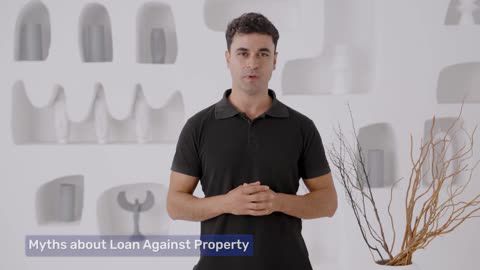When it comes to measuring length, the conversion between inches and centimetres is a common need, especially in today's globalised world. Whether you are working on a home improvement project, dealing with international measurements, or simply satisfying your curiosity, understanding how to convert inches to centimetres is a valuable skill. Read on to understand more about the Inches to cm conversion process, popular conversions, the conversion formula, and some key information about inches and centimetres.
How to convert inches to cm
Converting inches to centimetres involves a simple multiplication using the conversion factor of 2.54. The basic formula is:
1 inch = 2.54 centimetres
Inches to centimetre conversion with example
If you want to convert 5 inches to centimetres, you can use the formula as follows:
5 inches = 5 x 2.54 = 12.7 centimetres
Just like accurate measurements are crucial in construction or home improvement projects, having the right financial plan is vital. If you are short on funds for your next big project, consider a loan against property. It offers high-value financing to make your dreams a reality without disruptions. With Bajaj Finance, you can get a loan against property with competitive interest rates and meet your immediate expenses without hassle. Enjoy lower EMIs starting from Rs. 750/lakh* and longer repayment tenures.
About Inches
Inches, a unit of length, have been a fundamental measure in the imperial and U.S. customary systems for centuries. An inch is precisely defined as 1/12th of a foot in the imperial system. In the metric system, it is equivalent to 2.54 centimetres. This standardised definition ensures consistency in measurement across different applications.
History of inch
The inch is a unit of length with a rich and varied history dating back thousands of years. Its origins trace to ancient civilizations, including the Romans, who used the term "uncia," meaning one-twelfth part, as a basis for measurement. In medieval England, the inch was defined as the length of three barleycorns laid end to end. Over time, various cultures adopted their own definitions of the inch, leading to inconsistencies. Standardization came with the British Imperial System and later, the international yard agreement of 1959, which defined one inch as exactly 2.54 centimetres, aligning it with the metric system.
Inch to other units conversion
Inch is a commonly used unit of length, especially in the imperial system. One inch equals 2.54 centimeters, 25.4 millimeters, or 0.0833 feet. It also converts to 0.0278 yards and 0.0000158 miles. Understanding these conversions helps in various fields like engineering, construction, and international trade.
Popular Inches to Centimeters Conversion Table
Before delving into the conversion process, let us explore some common inches to cm conversions that you might encounter in everyday life:
Unit (inch) |
Unit conversion |
1 inch to mm |
25.4 mm |
1 inch to m |
0.0254 m |
1 inch to ft |
0.083 ft |
1 inch to yard |
0.027 yard |
1 inch to micrometer |
25400 micrometers |
While you are mastering conversions like meters to centimeters, think about converting your property's value into liquidity. With a loan against property, you can unlock funds for personal or professional needs and repay conveniently over time. Your property could be the key to your financial goals. By using your property as collateral, you can unlock access to large funds of up to Rs. 10.50 crore—it is a smart way to manage your finances with ease! Get funds within 72 hours* of approval*.
About cm
Centimetres, abbreviated as cm, are a fundamental unit of length within the metric system. This universally adopted measurement is part of the International System of Units (SI) and plays a pivotal role in various fields, from science and engineering to everyday applications. A centimetre is defined as one-hundredth of a metre in the metric system. It is represented by the symbol "cm." This small yet versatile unit provides a convenient and standardised way to express measurements in the metric system.
History of CM
The history of the centimetre (cm) dates back to the development of the metric system during the French Revolution in the late 18th century. Introduced as part of the original metric system in 1795, the centimetre was defined as one-hundredth of a metre. The metre itself was initially based on the Earth's meridian, but later redefined using more precise scientific standards. The centimetre became a widely accepted unit of length for everyday measurements due to its convenience. Today, it is part of the International System of Units (SI) and is commonly used in fields like education, construction, and healthcare.
Cm to other units conversion
Centimeter (cm) is a commonly used metric unit of length. It can be easily converted into other units: 1 cm equals 10 millimeters (mm), 0.01 meters (m), 0.3937 inches (in), and approximately 0.0328 feet (ft). These conversions help in accurate measurements across various fields like construction, science, and education.
Unit (cm) |
Unit conversion |
1 CM to Meter |
0.01 m |
1 CM to Millimeter |
10 mm |
1 CM to Micrometer |
10000 micrometers |
1 CM to Yard |
0.011 yard |
1 CM to Inch |
0.39 inch |
Whether it is measuring property dimensions or securing finances for a project, your property is more than just land—it's an asset. Leverage it with a loan against property from Bajaj Finance to access funds for education, business, or personal aspirations. It is a smart way to turn assets into action. With Bajaj Finserv Loan Against Property, you can get a loan of up to Rs. 10.50 crore with the option of interest-only EMIs during the initial tenure.
Inches to centimetre conversion
In the era of digital convenience, online converters have become indispensable tools for quick and accurate unit conversions. Several websites and mobile apps provide user-friendly inches to cm converters that make the process effortless. Users can input the value in inches, and with a simple click, obtain the corresponding measurement in centimetres. This is particularly useful when dealing with multiple measurements or when precision is crucial.
Why convert inches to cm?
- Inches and centimetres are used in different measurement systems, making conversion essential for global understanding.
- Many countries use the metric system, so converting inches to cm ensures universal accuracy.
- It helps in interpreting product dimensions when buying items like furniture, electronics, or clothing online.
- Scientific fields rely on centimetres, making conversion important for experiments, calculations, and data accuracy.
- Converting inches to cm is crucial in engineering and construction for precise measurements.
- It simplifies international communication, especially when sharing measurements across borders.
- School and competitive exams often require understanding of both units for solving numerical problems.
- Fitness and health measurements, such as height or body dimensions, frequently use centimetres.
- DIY projects and crafts need exact centimetre values for proper material cutting and fitting.
- Converting to cm helps avoid errors that may occur when relying only on approximation.
- It ensures consistency when recording measurements in documents or technical drawings.
Difference between inches to cm
Understanding the difference between inches and centimetres is essential for accurate length conversions. While inches are used in imperial systems, centimetres belong to the metric system, commonly used worldwide
Aspect |
Inches |
Centimeters (cm) |
Measurement system |
Part of the Imperial system. |
Part of the Metric system. |
Conversion factor |
1 inch equals 2.54 cm. |
1 cm equals 0.3937 inches. |
Regional usage |
Predominantly used in the USA, UK, and Canada for day-to-day measurements. |
Widely adopted worldwide, especially in science, education, and engineering. |
Applications |
Used for measuring heights, screen sizes, and construction dimensions. |
Preferred for precise measurements in laboratories, engineering, and global industries. |
Unit size |
Larger unit suitable for measuring longer objects or distances. |
Smaller unit ideal for detailed and accurate measurements. |
Ease of use |
Simpler for non-metric regions but less precise for small-scale measurements. |
Consistent and standardized for precision in calculations. |
Examples |
A foot equals 12 inches; an inch is commonly used for screen dimensions (e.g., 15-inch laptop). |
A meter equals 100 cm; often used in sewing, road signs, and architectural plans. |
Historical origin |
Originates from ancient Roman measurements (thumb width). |
Originates from the metric system introduced during the French Revolution. |
How to use the inch to cm converter tool?
Using an inch to centimetre converter tool is simple and helps you get quick, accurate results without manual calculation. First, open the online converter on your preferred website or app. You will see a designated input box for entering the value in inches. Type the number you want to convert—this can be a whole number or a decimal.
Next, click the “Convert,” “Calculate,” or similar button provided by the tool. Within seconds, the tool automatically displays the equivalent value in centimetres based on the standard formula (1 inch = 2.54 cm). Some converters also show additional units or offer reverse conversion from cm to inches.
You can clear the input to convert more values or use copy options to save the results. These tools are helpful for students, professionals, online shoppers, engineers, and anyone needing fast and reliable measurement conversions.
Main unit calculators
Understanding and using unit converters are essential for various fields, including construction, science, and everyday activities. Apart from inches-to-cm conversion, these calculators facilitate conversions between various units, such as feet to metres, pounds to kilograms, and more. Tools like an area conversion calculator further simplify the process of converting property measurements, ensuring precision in real estate and financial transactions.
In conclusion, the ability to convert inches to centimetres is a valuable skill that finds applications in diverse fields. With online converters and a basic understanding of conversions, anyone can achieve accuracy and efficiency in various endeavours.
Know How to Use Other Conversion Calculators Online
Click on any of the links below to learn how to use other conversion calculators online.
Unit Conversion |
||
Conclusion
The inches-to-centimeters conversion is a simple yet essential calculation that bridges the gap between the Imperial and Metric measurement systems. While inches are predominantly used in countries like the United States, United Kingdom, and Canada for daily measurements like height, screen sizes, and construction dimensions, centimeters are universally accepted and widely used globally, especially in fields like science, engineering, and education.
Understanding the relationship between these units—where 1 inch equals 2.54 centimeters and 1 centimeter equals 0.3937 inches—is vital for seamless communication and standardisation in industries, trade, and everyday activities. This conversion proves particularly useful in tailoring, construction projects, and international dealings where both systems are frequently used.
Similarly, just as conversions simplify measurements, leveraging your property for a loan against property can simplify financial planning. Whether you are funding a construction project, expanding your business, or managing international transactions, a loan against property allows you to access funds conveniently while retaining ownership. By tapping into your property's potential, you can achieve your goals seamlessly, just like converting between measurement systems promotes clarity and precision.




